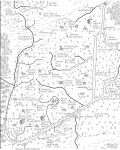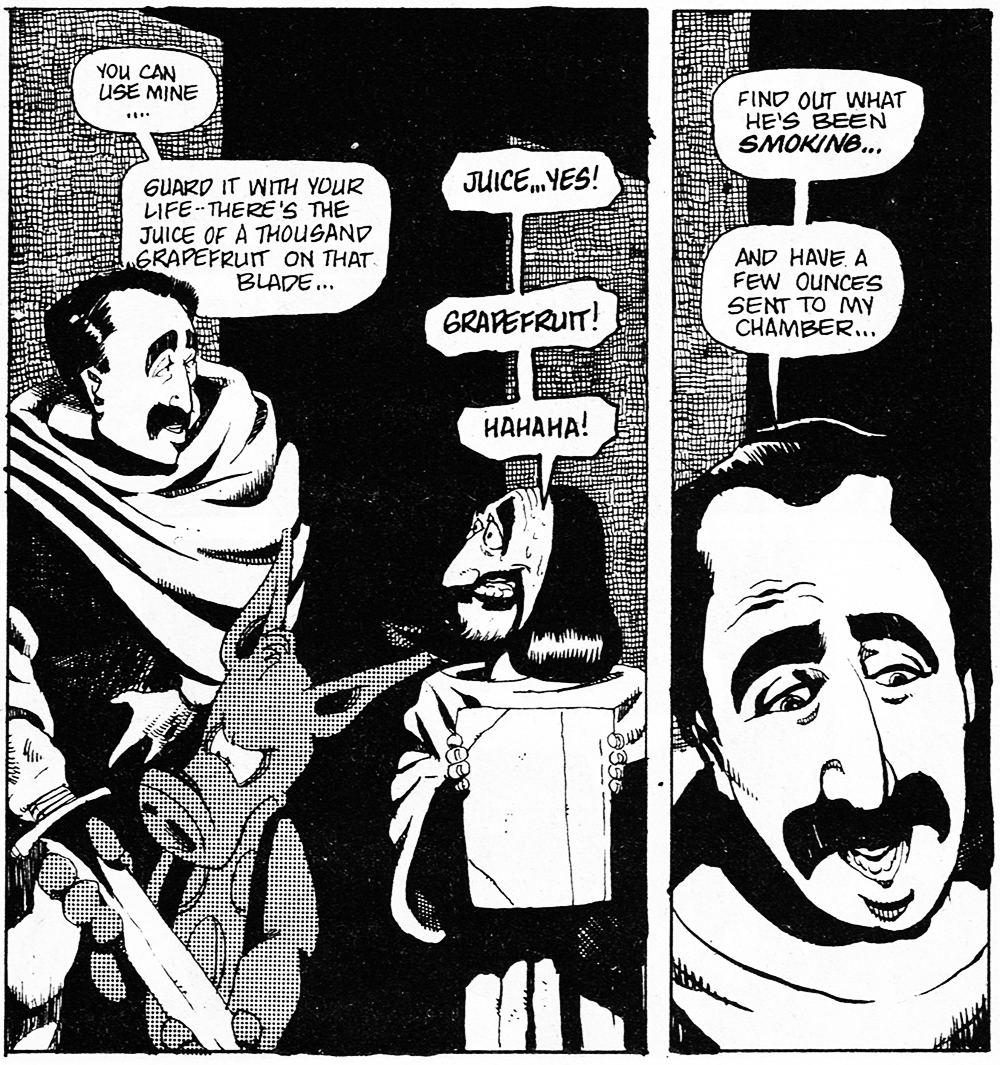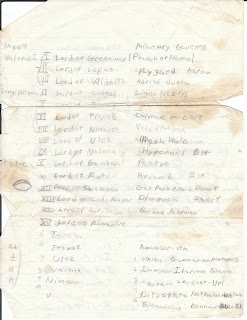Yeah, that would make it hard to write a high level module; it would require a high level of improv on the part of the DM, and all the designer could do is present the factions and NPCs well enough that they stick in the DM's head, and give them clear enough motivations and personalities that their responses to whatever random crap the PC's do would be easy for the DM to improvise.
Working on it. Scourge of the Demon Wolf was my first published pass at the general issue of presenting useful material for a free form situation. The next one I am working on won't address the high level issue but I have a few more in the hopper that may.
Greyhawk never did that for me, especially since I had the setting but few of the modules when I was younger. It was worse than a blank page, because you felt like you should know what to do with the minimalist national entries, but there was not enough to work with. It was simultaneously constraining and uninspiring for me. Forgotten Realms was the opposite, it was filled with minutia, all of which is cannon, so you are highly constrained with no room for improvisation (plus the politics of FR, so far as I even delved into them, never made it feel alive to me, and was not inspiring to me). Eberron hits the sweet spot for me; the major factions and NPCs stick in my head, and for any given mess that the PCs make I can think of a handful of factions that will care, and have a pretty good idea what they will want to do about it, AND there is lots of room in the setting to improvise.
With the Wilderlands, I could do the high level stuff even when I was young. I loved the Appendices in the Lord of the Rings and history books. The low level stuff the maps had were variations of the fantasy themes I grew up with so I could take most of them as is and just modify a handful to get what I need. I like the grey box of the Forgotten Realms but by then I had a dozen campaigns in the Wilderlands which was rapidly becoming it own thing which was the Majestic Wilderlands.
Maybe a high level module needs to focus more on the situation. Give the PCs a goal, give a few NPCs/factions a goal, tell us what the NPC's plans are and what they do until the players screw it up, and give a few guidelines for how the factions tend react to adversity. Add some things the PCs are likely to need to interact with in pursuing the goal, and some likely endgames depending on the most likely way those things will be interacted with.
I think that in the ballpark and worth pursuing. With high level you just need to think about the scope. The stuff I published and working on currently are good for low to mid levels but don't have the scope to give the feel this is what a high level character would be dealing with.
Before I had to deal with the bullshit with Bob Bledsaw II I was working on this, the forest of Dearthwood next to the City State of the Invincible Overlord. The basic gist is that it was once was the Elven kingdom of Silverwood. Then the ancient dragon Pan Calderax sacked the Majestic Fastness and shattered the dwarven kingdom and then lead the orcs against the Elves and the humans of the Dragon Empire that CSIO was once the capital of. The forest was ruined in the battles. The fight was much magical as it was physical and left the forest cursed.
But it not a simple thing/ For a high level party could go to into the the Argent Halls, once the royal residence and lay the undead spirit of the Elven King to rest. There but then there is still is everything that moved or crawled into the forest underneath the curse. The dozen tribes of Orcs, the faeries, undead, covens of warlocks, and a very old Green Dragon, Mori that opted to stay. Along with the those who rule outside of the forest border who have their own agendas. The symbols marked taighs were once guardians that warded the borders from interlopers. Each of them has fallen and been corrupted in different ways.
My general idea was to make this not a adventure path but an adventure region. With everything logically hanging together but with opportunities for characters from low level to high to make their mark.
I had some campaigns try to deal with this area. The symbol on the left hand side marked Taigh (mage) was done by PCs who successfully reactivated one of the Elven border guardians call a Taigh and made it their home. But the problem been trying to get the resources needed to untangle the whole mess to cleanse the forest.
There are a lot of detail to iron out even after I repurpose this for my Majestic Fantasy Realms. But but idea to make it a suitable challenge for high level party is to create a multi-layer situation (but not too many layers) that can't be solved just by being able to kill any one thing.

Here is an account of when a mid-level party when into the above.
One Thousand Four Hundred and Fifty Orcs slain
That incident is recorded on the map above on the left hand side Vile Rune (Orc, Decimated).
The Elf Lord's Temple is a low level adventure I created a while back. It near OakWatch Keep on the map.
This
is the a series of post made by a player in a 5e campaign I ran. The last couple is how the party redeems the evil Green Dragon Mori.
I have a lot of details written but a useful format still hasn't quite jelled yet in the way it did for Source of the Demon Wolf or the next one the Deceits of the Russet Lord.




